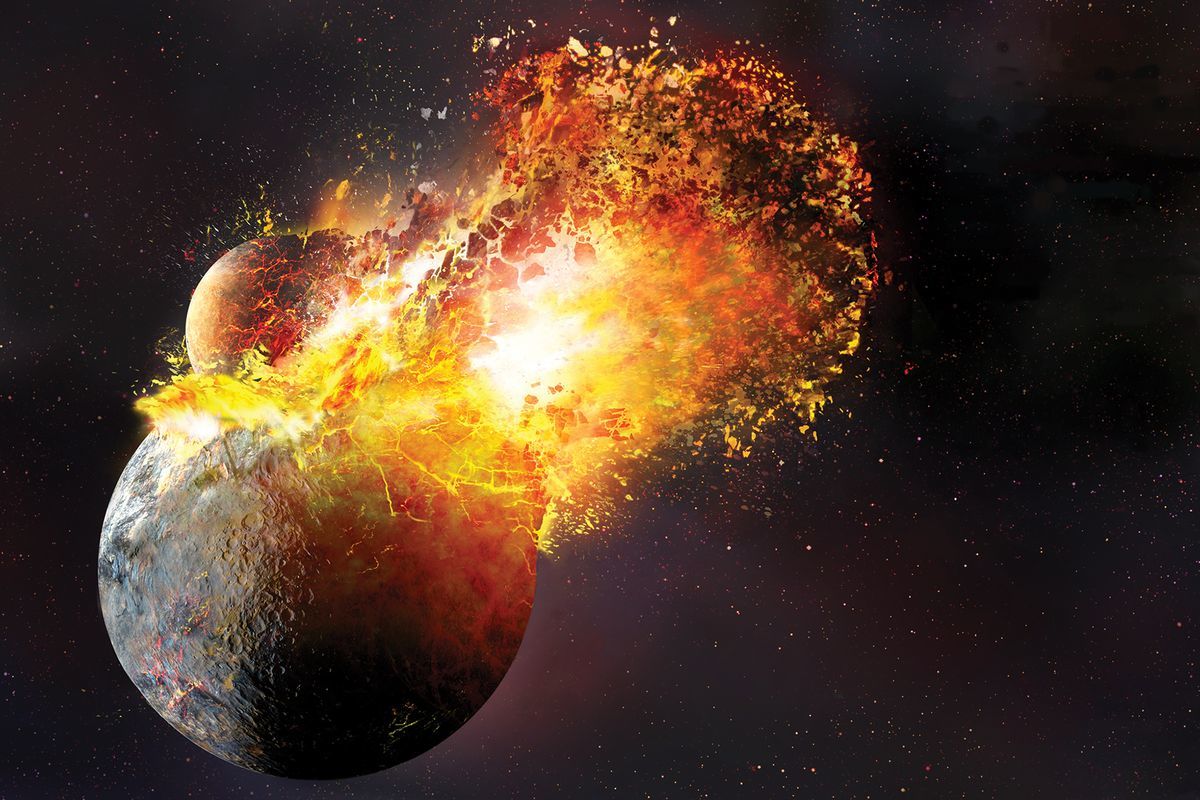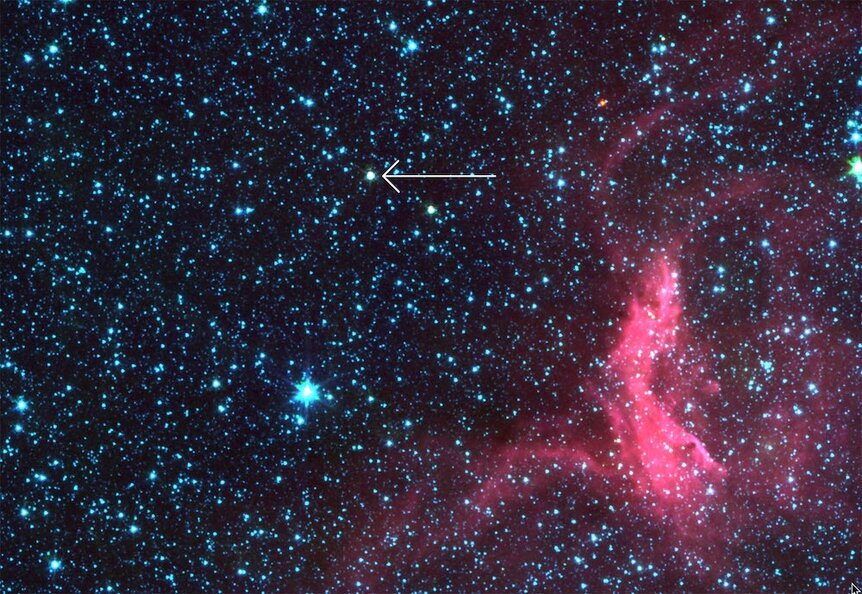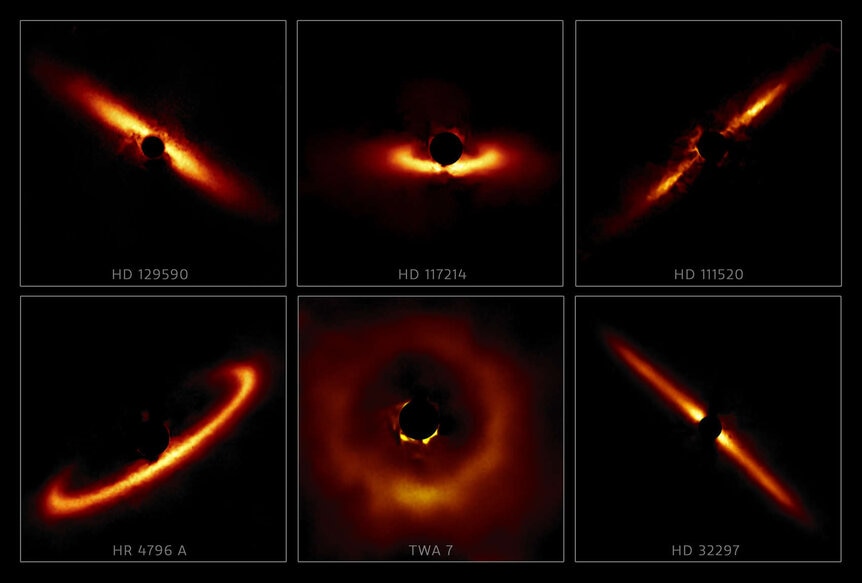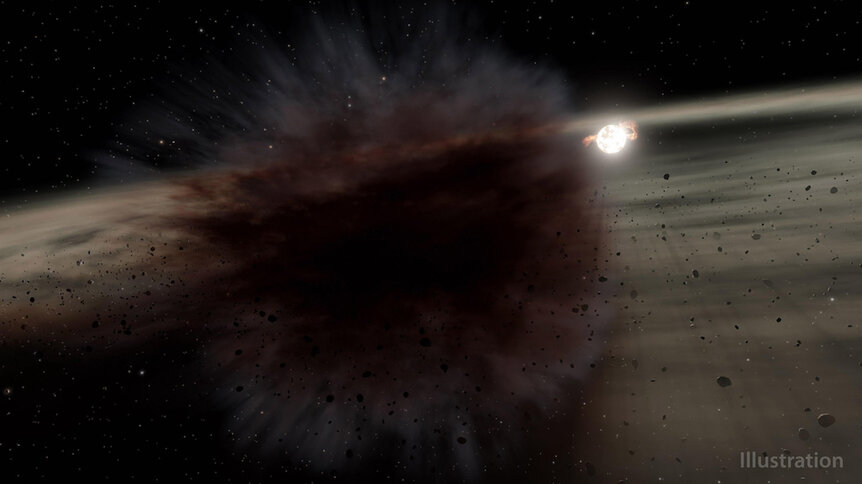Create a free profile to get unlimited access to exclusive videos, sweepstakes, and more!
Astronomers discover a huge expanding debris cloud from two colliding protoplanets!
When worlds collide, they make a lot of dust. A lot.

In a planet-forming disk of gas and dust around a young, nearby star, two huge objects recently collided at high speed. The colossal impact was positively apocalyptic in size, vaporizing enough material to make a small planet — at least. Even better, the huge dust cloud created in the event passed between us and the star, eclipsing it twice, allowing astronomers to learn more about this catastrophe.
The star is called HD 166191, and it lies about 325 light-years from Earth in the direction of the constellation Sagittarius. It’s bigger, more massive, and hotter than the Sun, and it’s young, probably only 10 million years old — our Sun is 450 times older than this, so the star is just a baby.
Young stars are commonly surrounded by a disk of material called a protoplanetary disk, out of which planets form. These disks are warm, and while most are too small to see directly, their heat emits infrared light that can betray their presence. This infrared excess is seen with HD 166191, indicating such a disk orbits it.
A team of astronomers observed the star with the Spitzer Space Telescope specifically to look at the disk and see changes in it as planets form. Spitzer was an infrared observatory that operated for 17 years before being decommissioned in January 2020. Over five years, between 2015 and 2019, the telescope looked at HD 166191, monitoring it roughly every three days for a month twice a year, sending back over 100 separate observations [link to paper].
The infrared light from the star was roughly steady until, in 2018, it suddenly increased in brightness. Over the course of about a year it doubled in brightness, a huge increase. It peaked in 2019 and was still near that peak during the last set of Spitzer observations in the summer of 2019.
A key point is that the star itself did not get any brighter in visible light — the kind our eyes see — making it pretty clear that something other than the star was generating this infrared light. Given the star is young and there are likely planets forming in the disk, the obvious conclusion is that two rocky protoplanetary objects collided at high speed. The immense impact would’ve created intense heat, vaporizing a lot of material that would then cool and condense into warm dust, and that cloud was what emitted the infrared light.
Whole planets colliding. I still have to remind myself that things like that are real.
Interestingly, two big dips were seen in the star’s visible light brightness, separated by about 142 days right around the same time the IR brightness increased. The astronomers attribute that to the dust cloud itself passing between the star and us, blocking its light. If that’s the orbital period of the dust cloud, it means the objects collided about 90 million km from the star — a little bit less than the distance of Venus from our Sun — and given how long it took the star to dim and brighten again, the cloud is huge, at least 3 million km across.
And, in fact, it’s likely much bigger. If the orbit of the cloud is tipped to our line of sight that means only the edge of it clipped the star, so the actual size could be way larger than inferred. In fact, the kind of material seen usually only makes up a fraction of the total material blasted out from such an event, so there could be a lot more to this cloud than seen.
Given the minimum size and the brightness of the infrared emission, the astronomers reckon the dust generated in the impact was enough to create a single object 400 – 600 km across. That’s huge; the size of Vesta, the second-largest object on our asteroid belt, and again this is a minimum. The objects that collided could’ve been planet-sized.
Incredible. Hundreds of light-years away two planetary objects slammed into each other at a speed likely to be tens of thousands of kilometers per hour, and the resulting catastrophic explosion of material expelled 100 quadrillion tons of dust. At least.
We’ve seen evidence of such things before, but this is the first time a debris cloud has been seen to transit the star, allowing the cloud size and mass to be calculated. That’s phenomenal. Sadly, without Spitzer it’s unclear if such things can be followed-up; James Webb is likely to be hugely oversubscribed as it is, and observing the same object over and over again often enough to catch such an event seems like something the JWST Telescope Allocation Committee would probably deny. I’d love to see more small infrared ‘scopes in space, too, so that we can do pinpoint stuff like JWST and still do more survey stuff like observing planetary collisions just like the ones I saw in movies when I was a kid.
Because they really happen. And we can learn a whole lot about how solar systems like ours and others form by observing them.





























